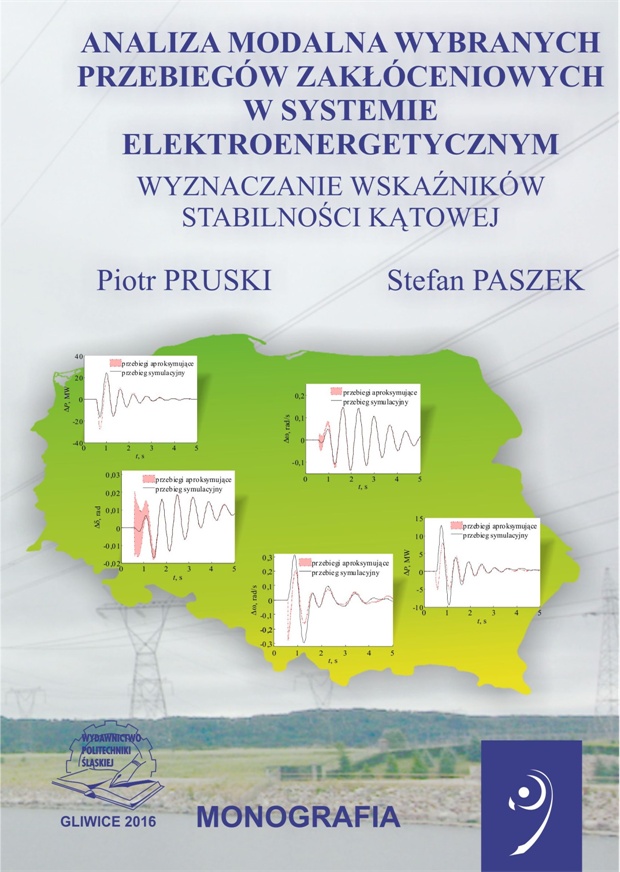|
Piotr PRUSKI, Stanisław PASZEK
|
 |
In the monograph, there is presented a method for assessing the angular stability of a power system (PS) based on the analysis of disturbance measurement waveforms of instan¬taneous power, angular speed and power angle of generating units.
The assessment of PS angular stability can be carried out with use of stability factors calculated based on the PS state matrix eigenvalues associated with electromechanical phenomena (called electromechanical eigenvalues in the monograph).
In the research described, the electromechanical eigenvalues were calculated on the basis of the waveforms occurring after a purposeful introduction of a small disturbance (in the form of a rectangular pulse or a step change of the voltage regulator reference voltage) in one of generating units. In the case of calculations based on measurement disturbance waveforms, the assumed PS model and its parameters do not influence the results of calculations, whereas the real operating conditions of the PS do.
The method used in research for calculating eigenvalues consists in approximation of the disturbance waveforms by the waveforms being a superposition of modal components with parameters dependent on the searched eigenvalues. In the process of approximation, these parameters are iteratively selected so as to minimize the value of the objective function defined as the mean square error between the approximated waveform and the approximating one.
A hybrid optimization algorithm being a serial connection of genetic and gradient algorithms was used to minimize the objective function.
In order to analyse the accuracy of the method applied to calculations, there were used the waveforms obtained from simulations using the 7-machine tested PS CIGRE model and the 57-machine Polish Power System model.
Electromechanical eigenvalues are calculated on the basis of measurement waveforms recorded in power plants. There was developed the method for filtration of measurement waveforms enabling the sufficient damping of disturbance components without introducing delays and significant distortions of these waveforms.



